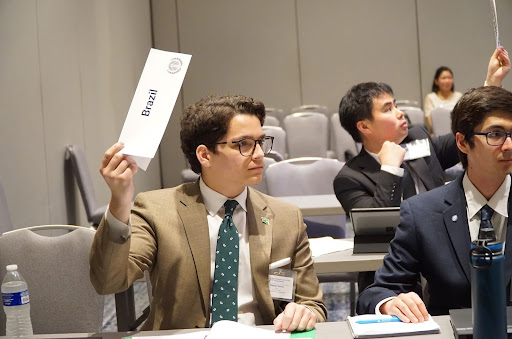Addressing Nuclear Realities: Insights from the Model United Nations General Assembly First Committee
As the Model United Nations General Assembly First Committee concludes its first session, delegates from around the globe gather to address pressing issues in the realm of nuclear weaponry and the potential benefits of nuclear energy. The prevailing sentiment among members echoed with calls for disarmament and the prohibition of future developments in nuclear weaponry. “Nine states. We live in a world where nine states possess all the nuclear weaponry,” the delegate of Egypt passionately stated as they called for a nuclear-free zone in the Middle East region and advocated for a ‘national review’ for proliferation treaties. Israel, in particular, voiced concerns regarding Iran and the perceived threat it poses to Israel’s security. Israel boldly advocated for the complete disarmament by Iran, urging fellow members to consider imposing sanctions and restricting Iran from further advancing its nuclear arsenal. The Iranian delegate responded by condemning Israel’s statement against the Islamic Republic and accused Israel of diverting attention to Iran to distract from their actions in Gaza. The Iranian delegate accused Israel of attempting to rally its Western allies to impose western ideology into the Middle East region.
Discussions surrounding the utilization of nuclear energy yielded mixed results with members challenging those who supported or perceived the benefits of nuclear energy. The Cuban delegate offered a thought-provoking perspective on the environmental and socio economic ramifications of nuclear energy and uranium mining, particularly in perpetuating disparities in the Global South. Cuba’s solution was a call to adopt the use of Thorium as an alternative energy source for nuclear production. In a compelling address, Cuba delineates three primary reasons for the transition from uranium to thorium: its status as a cleaner element devoid of pollution, its non-proliferation characteristics, and mining benefits as Thorium is 3-4 times more abundant and higher on the earth’s crust.
Senna Bryant
World Press Reporter
Metropolitan State University, Denver











